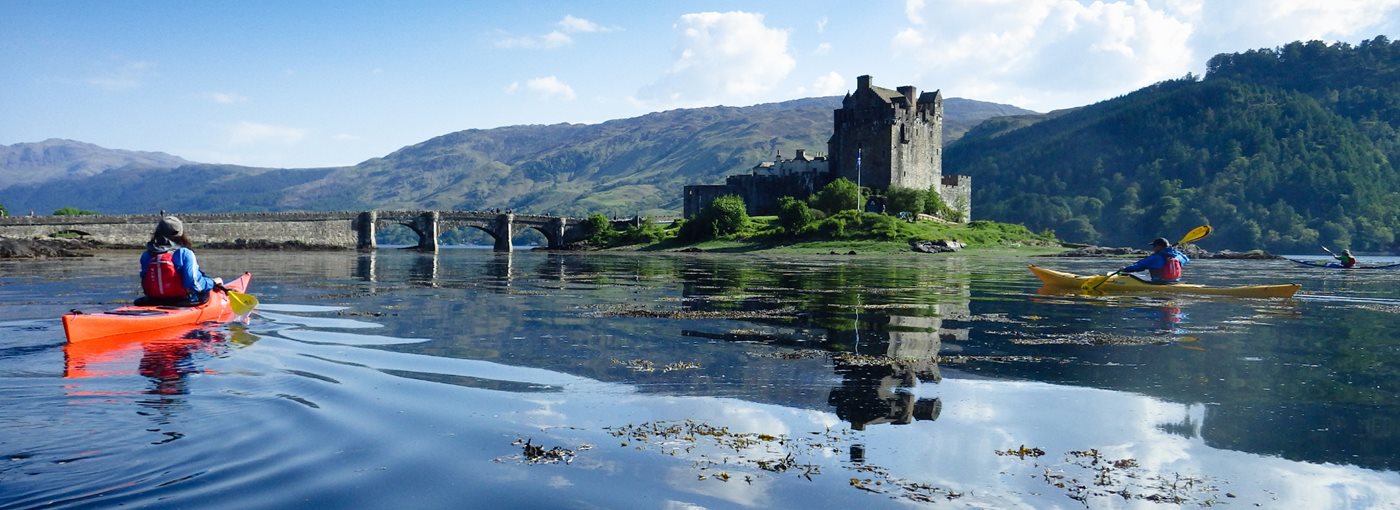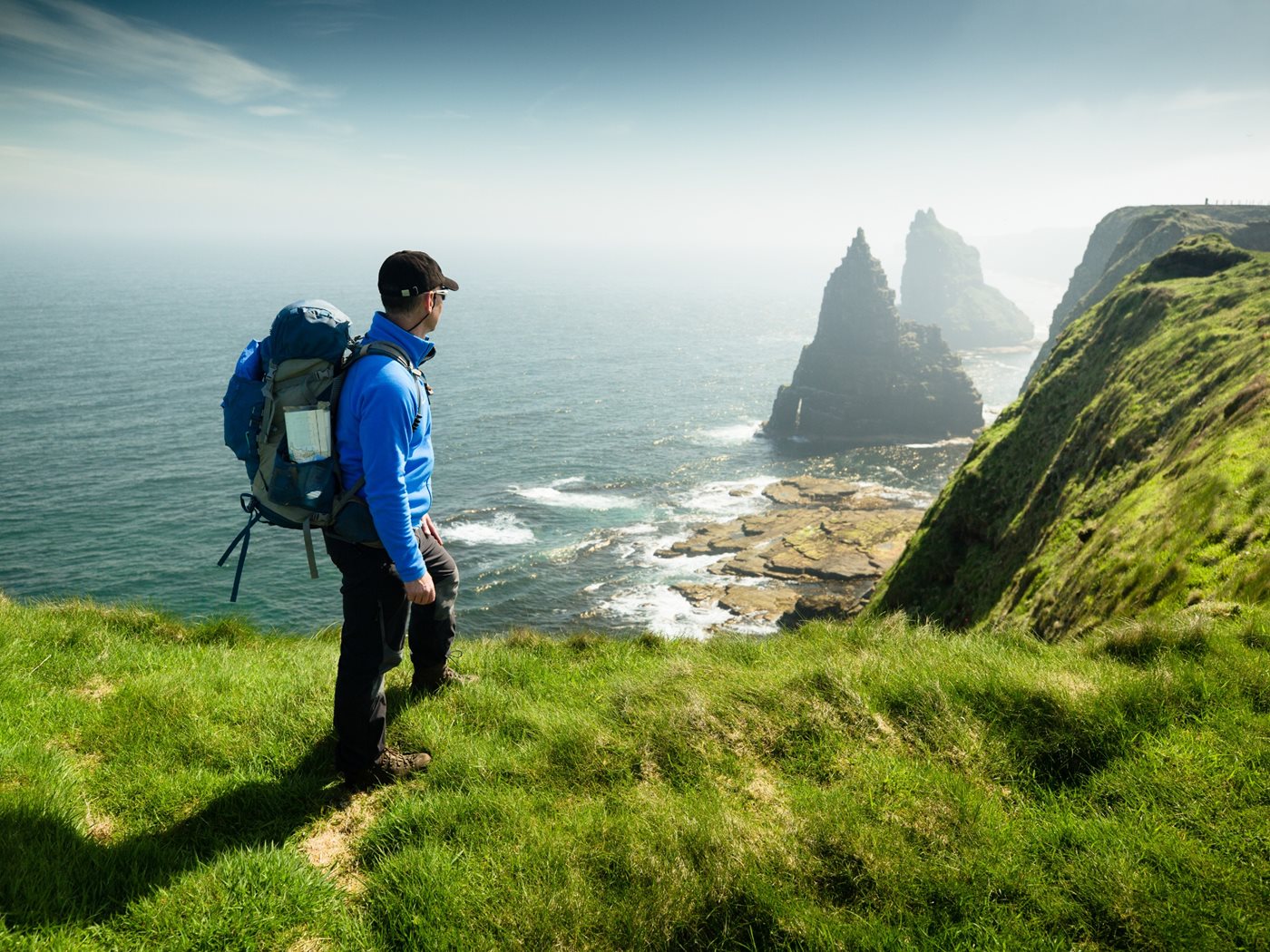Building on the values of Inspirational, Professional, Sustainable, Innovative; Wilderness Scotland has shown the way for many in how to create a sustainable business and deliver sustainable holidays that positively change people and change the environment.
Paul and Stevie are sustainable tourism pioneers, founding Wilderness Scotland over 20 years ago. Their vision for 21st century tourism, is one in which the industry can play a major role in helping people to enjoy, experience and connect with the amazing natural environments in which we live.

High Sustainable Standards
It was a passion for Scotland’s wild places and a desire to set high sustainable standards that would impact people who live, work and visit that was the catalyst that brought Wilderness Scotland to life.
In the intervening years, Paul, Stevie and their team of highly qualified guides and staff have led by example, showing that the outdoor tourism industry has and will continue to play a significant role in helping people to enjoy, experience and connect with Scotland’s unique natural environments. When he originally started the business many years ago, Paul couldn’t have predicted how significant the threat of a changing climate would become.

Environmental commitments
Wilderness Scotland takes their impact on climate change and emissions reductions seriously. It delivers significant support each year to environments and communities through our pioneering Conservation Contribution Scheme with contributions from its clients.
They made a Climate Emergency Declaration and always sought to run an environmentally sustainable business and have been independently recognised several times for doing. Now though, they feel the time has come to ramp up the action, work harder and act more creatively to respond to the climate emergency with renewed focus and energy. The Tourism Industry, alongside others, contributes to the climate crisis, and we acknowledge this requires an urgent need for change across the industry. The paradox is that travel and tourism can be an amazingly positive force for good. Well-managed, sustainable tourism supports local economic development, sustains local communities and traditions and shines a light on nature and wildlife conservation.
Built upon this philosophy, Wilderness Scotland’s mission is to maximise these positive benefits of tourism while seeking to minimise the negative impacts. Climate change is happening now, which is why we became one of the founding signatories to the Tourism Declares a Climate Emergency and the Glasgow Declaration.
They are keen that their commitment to reducing emissions is the response needed across the travel industry. Backed by science and expert independent input, they have committed to reducing carbon emissions by 90% by 2030 (9% per annum for ten years from 2020).

Continuous Assessment
Wilderness Scotland has assessed every aspect of their business to benchmark its carbon footprint and give a baseline to work.
The three essential contributors to their footprint are travel (our vehicles shuttling our guests around the country), the hotels where our guests stay, and the food our guests eat.
These three items account for over 80% of our carbon footprint as a business. Paul and Stevie want to do more but encounter these barriers to change.
The upfront cost of buying an EV is significant. Costing 50-100% more than an equivalent petrol vehicle. However, public funding is potentially available, its insufficient to allow them to speed up the process of decarbonising the fleet of vehicles, with a limited choice of electric minivans coupled with “range anxiety” (a 7-day tours needs military-level planning to ensure there is enough power to get from A-B) as well as the unavailability and unreliability (a recent study found that 25% of them could be out of order at any point in time and many popular spots have queues), making them more sustainable vehicle choice a considerable risk at present.
Wilderness Scotland prefer to team up with accommodation working to sustainable principles, but there are limited choices available in the Highlands. Public sector support for investment in hotels to improve their sustainability (E.g. more sustainable energy sources) would have a positive knock-on effect for the whole sector.
Wilderness Scotland tours seek to reduce food miles, focusing on restaurants and suppliers that source food locally, which has clear economic and environmental benefits. They also request that the hotels offer a wider selection of vegetarian dishes, reducing the reliance on meat production.
For those emissions they cannot eliminate by 2030, they undertake to permanently remove the carbon equivalent from the atmosphere by investing in reforestation and afforestation projects.
Paul states, “Through this approach, our goal is to achieve “True” Net Zero status by 2030. Our work over the past two decades has already taken us a long way to this net zero goal, but there remains a lot of work to do, which will arguably be the hardest work of all. The recent design and development of our net zero HQ, powered by renewable energy on a brownfield site in the Cairngorms National Park is a sign of our commitment. Over the coming years, we’ll continue to push harder and respond faster to make further reductions to both our direct and indirect carbon emissions drawing upon the most extensive measurement and benchmarking exercise we have ever done, this will see a Carbon labelling scheme which not only measures the carbon impact of the entire business but of each and every trip. This work has been and will continue to be essential for monitoring our progress and identifying ways to continue reducing their impact year on year”.
The concept of community tourism does apply in Scotland - and is a key part of the business involving spending money in locally-owned businesses rather than working with larger hotel chains and suppliers. Encouraging out-of-season travel helps many local businesses have little income over winter and respect the local communities by, for example, travelling in small groups only (typically around eight guests), so as not to overwhelm local shops / cafes when they arrive, educating their guests about any local issues.
A focus on people
Wilderness Scotland also have a strong focus on its own people, those who work in the business. Paul and Stevie are committed to training and upskilling the team, and rewarding them with a better-than-industry-average and better-than-local-average salary. Beyond salary, they provide an extensive range of benefits, including opportunities for staff to get out and explore the wilderness which is at the heart of the business for themselves. This is good for personal development as well as the mental and physical health of our team. Wilderness Scotland's approach has been recognised by several awards, including being named as a finalist in the 'Best Workplace' and 'Best Workplace for Females' awards.
Why Wilderness Scotland?

More from Wilderness Scotland
Discover more about experiences with Wilderness Scotland
Registered Company No: 303299 | Registered address: Wild Scotland, Suite 212, 8 Church Street, Inverness IV1 1EA
